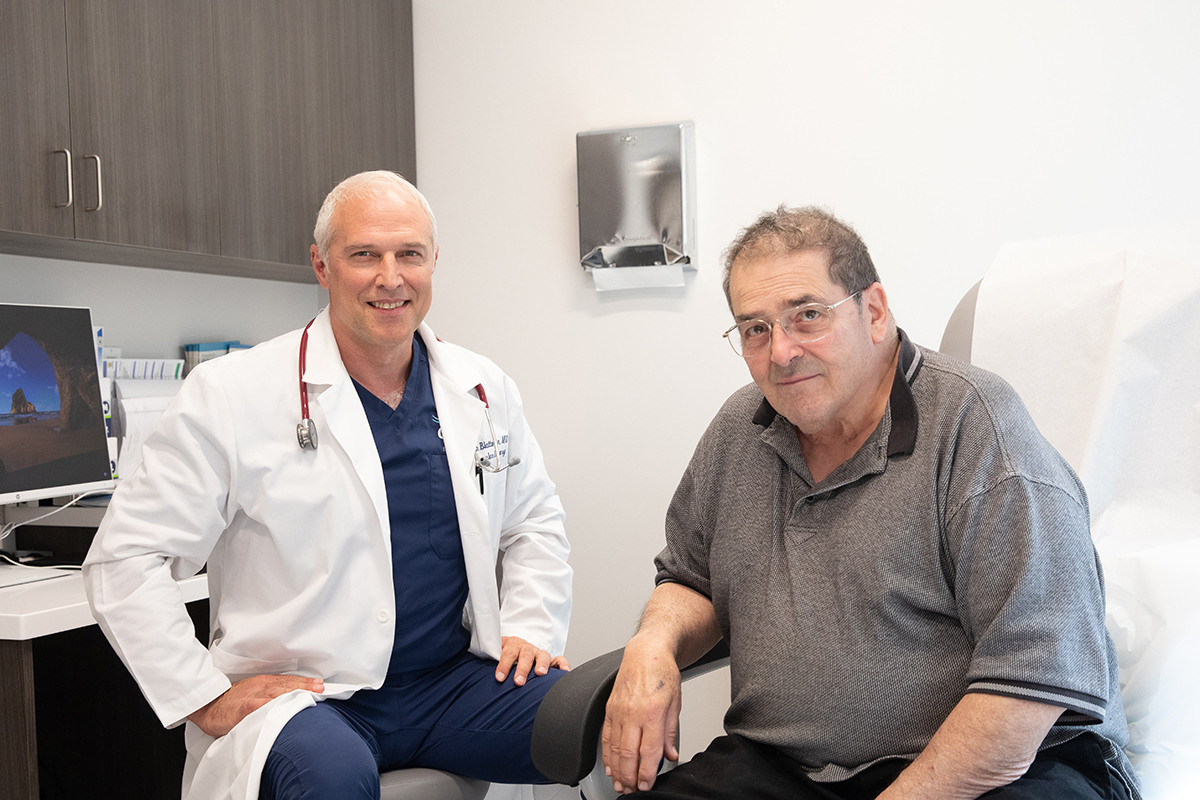Chronic non-healing wounds affect more than 6.5 million people each year in the US, according to the American College of Surgeons (ACS), and the incidence is only expected to increase as the population ages.
The impact of a non-healing wound can be profound. People suffer pain, loss of function and mobility, increased social stress, isolation, depression, prolonged hospitalizations, financial burdens and increased morbidity and mortality, the ACS notes.
Typically, a patient may not grasp the full extent of the causes behind their wound, which is one reason to seek professional help.
“The human body is covered by a protective organ, which is our skin, and the skin is very fragile,” said Rummana Aslam, MD, medical director of the Wound Care Center for L+M Hospital and an associate professor of Orthopedics and Rehabilitation, Yale School of Medicine. “Most of the time, if you get a small cut or even a surgical incision, it heals without a problem, because skin knows how to heal itself. However, if there are underlining conditions that don’t allow a wound to heal, that’s when the trouble starts.”
Treating wounds with holistic care
The causes of non-healing wounds are often systemic. “We always look at the whole person. We don’t see only the wound, we see an individual,” Dr. Aslam said. “We evaluate their lifestyle and all underlying medical conditions.”
For example, no matter the type of wound, there are questions that need to be considered. Does the patient smoke? Is the patient eating a healthy diet? Is their blood sugar under control? Depending on the answers, wound team specialists will consult with colleagues across Yale New Haven Health, collaborating on care with physicians in Dermatology, Oncology, Podiatry, Primary Care, Surgery and Urology, among others.
Sandra Wainwright, MD, medical director of the Wound Center at Greenwich Hospital, shared Dr. Aslam’s philosophy on the value of holistic care.
“There is a common adage in wound healing where we say ‘You have to heal the whole patient in order to heal the hole in the patient,’” Dr. Wainwright said.
The four major categories of non-healing wounds according to a classification from the Wound Healing Society are pressure ulcers, diabetic food ulcers, venous ulcers and arterial insufficiency ulcers. Wounds can also be caused by trauma.
Treatments currently in use at Yale New Haven Health include advanced wound dressings, compression wrapping, negative-pressure therapy, bioengineered tissue therapy, debridement therapy, ostomy care and hyperbaric oxygen therapy (HBOT). During HBOT treatment, patients breathe 100 percent oxygen inside a compression chamber, which floods tissue with oxygen and reduces infections.
Diabetic Foot Ulcers
Reducing pressure and increasing oxygen with HBOT can help diabetic foot ulcers.
A diabetic foot wound or ulcer is an open sore or wound that occurs in about 15 percent of patients with diabetes and it is commonly located on the bottom of the foot. Approximately six percent of patients with diabetic foot ulcers develop infections or other complications that often require an inpatient stay in a hospital. A devastating consequence for a percentage of these patients is amputation, but proper care can sometimes prevent such an extreme outcome.
“For each patient, we will evaluate and treat their infection, we will reduce friction and pressure on the wound, we will, when necessary, work with colleagues in vascular surgery to restore adequate blood flow to the region,” Dr. Aslam said. “We will work with physicians to lower blood sugar. We will do many things simultaneously as we strive to provide the greatest of care for every individual.”
Venous Ulcers
Compression stockings can help some venous ulcers.
Venous ulcers are typically caused by damaged valves in veins in the legs. When the valves don’t function properly, increased blood pressure in the legs can result in ulcers at the ankles. Venus ulcers can also be caused by varicose veins, which can allow blood to pool in the lower leg.
“Our wound specialists routinely collaborate with vascular surgeons within our health system to help with circulatory or vein problems that are causing ulcers,” Dr. Aslam said. “We also have many other tools that can help patients, including compression stockings to prevent blood from pooling in the legs, and simply elevating one’s legs can help. A visit to any of our Wound Care centers across our health system can lead to a detailed plan of care for each individual and their specific needs.”
Pressure ulcers
Proper movement can help pressure ulcers.
Commonly known as bedsores, pressure ulcers occur when skin and tissue are under pressure for too long, which is why they are most common for people with medical conditions that keep them in bed and unable to move frequently.
“Sometimes, if a person is confined to a wheelchair, we’ll see pressure ulcers develop on the buttocks or the tailbone, for example,” Dr. Aslam said. “There are actually four stages to pressure ulcers. First, a reddening, then blisters, then open wounds or ulcers. In the final stage, some people have damage to bone and muscles, tendons and joints.
“Anyone who sees early signs of a pressure ulcers should take action to relieve the pressure in that area,” Dr. Aslam recommended. “Pillows and cushions can help, but patients also need to move regularly and reposition their bodies to reduce the pressure. And see a doctor.”
Arterial insufficiency ulcers
At risk populations include those with diabetes, poor circulation and obesity.
Arterial insufficiency ulcers are caused by a lack of adequate blood flow to an area of the body. “These wounds can be very painful,” Dr. Aslam noted. “They are often in places in the body with poor circulation such as the lower extremities including the toes. The at-risk population includes those with diabetes, obesity, poor circulation due to smoking, and those with foot deformities that can lead to high pressure while walking, for example.
Anyone who notices any type of wound that is not healing should contact their healthcare provider for a consultation, Dr. Aslam said. “Act immediately,” Dr. Aslam said. “Proper healing is a complex mix of many aspects of our physiology, and that’s why a failure to heal often requires a multifaceted approach. I’ve seen patients who came to us with little hope and, thorough evaluation of root causes and the expertise of our caregivers, they begin to heal. I’ve seen the elation in their faces when they realized they are getting better.”




